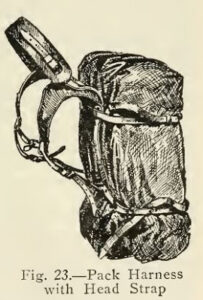I came across an interesting article called “Pedomic Mobility” in the October-November 1960 issue of “Infantry” magazine.
In the narrative, an officer watches his company conducting a “ruck attack” on a position.
A ruck attack is an assault where the troops wear their rucksacs. This slows the soldiers down, makes them larger and more obvious targets and tires them out more quickly.
Shooting from a prone position may be problematic if the pack prevents the soldier raising his head.
Despite the obvious disadvantages, the ruck attack remains common in certain armies, both in training and actual combat operations.
The officer watches his near exhausted men and ponders if there is a better alternative.
The proposed solution has two parts. The first is the attacking force should be equipped thus:
• Clothing appropriate for the climate, season and weather
• Load-bearing equipment
• Helmet
• Weapon and ammunition
• Bayonet
• Water bottle, cover and canteen cup
• First aid packet
• Gas mask
• Poncho.
Personally, I consider a canteen cup a backpack item. The dynamics of operating in a platoon or company may change this, however.
Soldier's Bed Roll
If the unit was to stay in one place for any time, a bed roll for each soldier would be brought forth. A bed roll, as described in the article, consists of:
• Shelter-half with poles and pegs (“pins”)
• Blanket
• Air mattress
• Sleeping bag
• One or two changes of socks and underwear
• Towel
• Toiletries
• Field jacket liner and trouser liner*
• Mickey boots*.
*The jacket and trouser liners were included if it was a “seasonally transitional period”. The mention of the blanket and insulated boots suggest the cold of Korea was still fresh in many soldiers’ minds.

If you have read Kephart, you will know that an outdoorsman’s pack was once exactly that: a package of items wrapped in canvas (above).

The bed roll was primarily intended to be moved by truck or jeep. When necessary it could be carried by the infantryman.
The author suggest re-rolling the item into a horseshoe roll, or fitting the bed roll with a rope or carrying strap.

The use of a shelter-half for the outer layer is particularly clever.
Being made of canvas, it is robust and relatively damage tolerant.
It is better suited for this roll than a poncho or more modern nylon tent might be.
Shelter-halves were widely available from military supplies and easily replaced. A shelter-half could be put to a number of other uses other than as a pup-tent.
See this video for a “pegs before poles” method of setting up a shelter-half tent.
The only objection to using a shelter-half is that most are green, rather than more versatile dull brown or camouflage finishes.
Also notable was this officer understood that toiletries were not something a soldier needed to carry on his person.
Can we adapt this concept to more modern equipment?
An all-weather blanket that can serve as a ground cloth and for other uses would be a good addition.
Air mattresses are not common with modern users. I do know some soldiers who use self-inflating sleeping mats.
Most, however, use foam kip-mats. Even when trimmed down, these tend to be bulky.
Similarly, a poncho liner is rather bulky when rolled. I am not sure you could roll these up in a shelter half with a sleeping bag and still have a roll only a foot in diameter.

In the article, mention is made of stowing bed rolls in waterproof bags. An obvious extrapolation of this is to carry a bagged bed roll within a medium-sized rucksac. Packs would be clearly marked with name, squad, platoon and company, for example: Grant N. 471, 3-2-B.
The pockets of a rucksack are a more convenient place to carry a wash-kit, canteen cup and some other items.
A foam kip mat can be rolled separately from the bed roll and carried along side it within or outside the pack. Kip mats have uses in addition to sleeping on, so having them separate is more convenient.
When bed rolls are brought forward, rations and ammunition will probably be brought with them.
If a unit has to fall back, the rucksacks used to move the bed rolls can also carry some of the rations and ammunition too.
The specific contents of a bed roll with vary with climate and other factors.
When in transit, experienced soldiers will keep their bed roll close to hand. If baggage gets misdirected or delayed, the soldier still has the essentials necessary for a good night’s rest.
The article Pedomic Mobility was written for infantry companies conducting operations within range of support units. It may, however, provide some inspiration for independent outdoorsman both as to how and what they may carry.